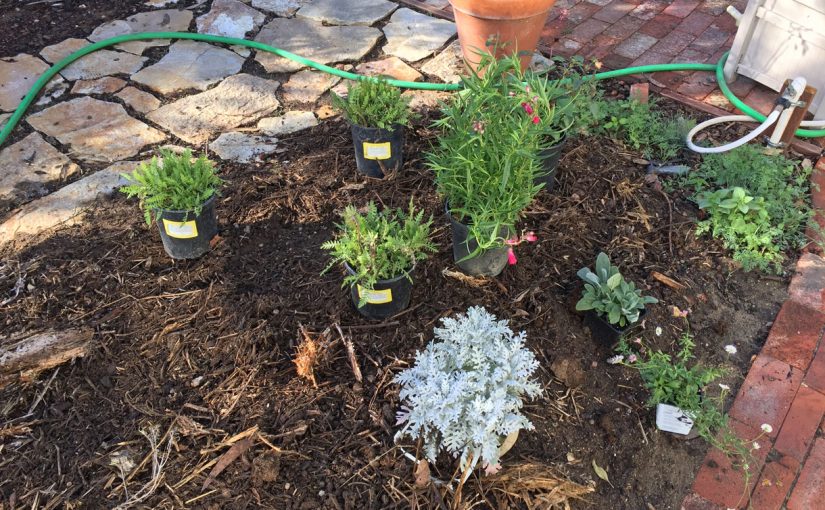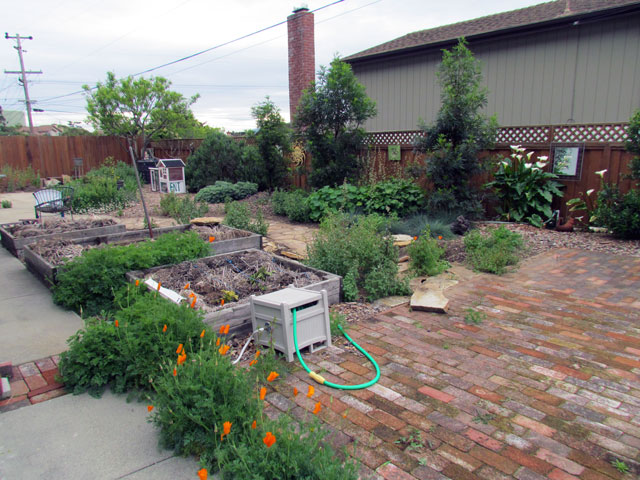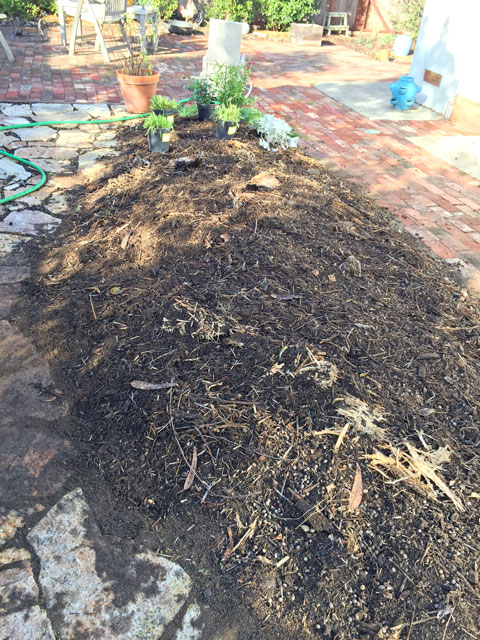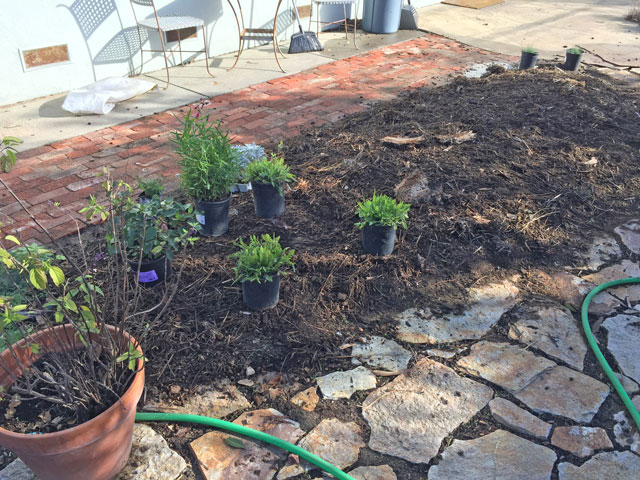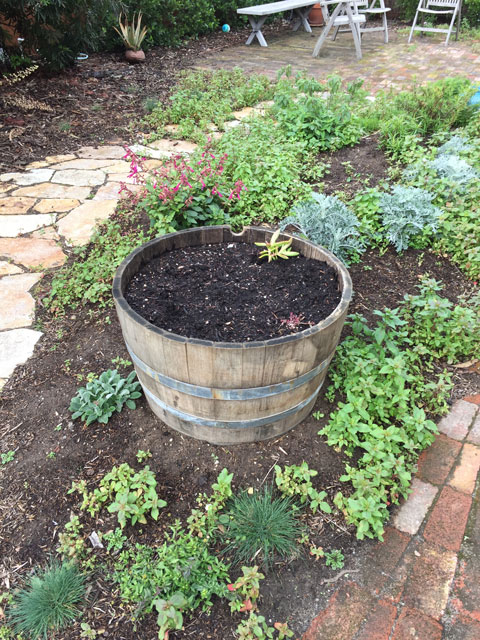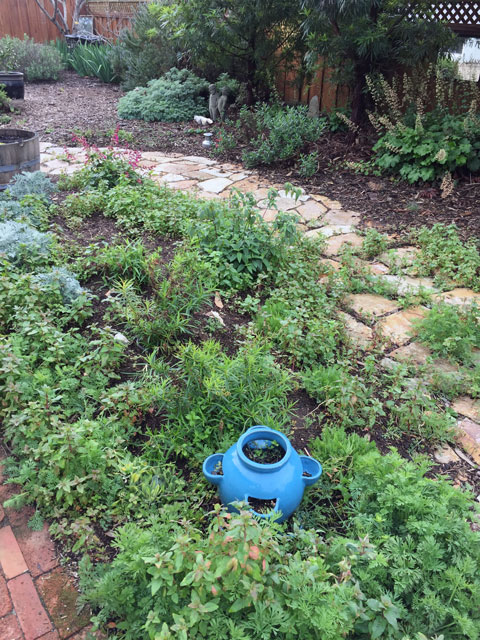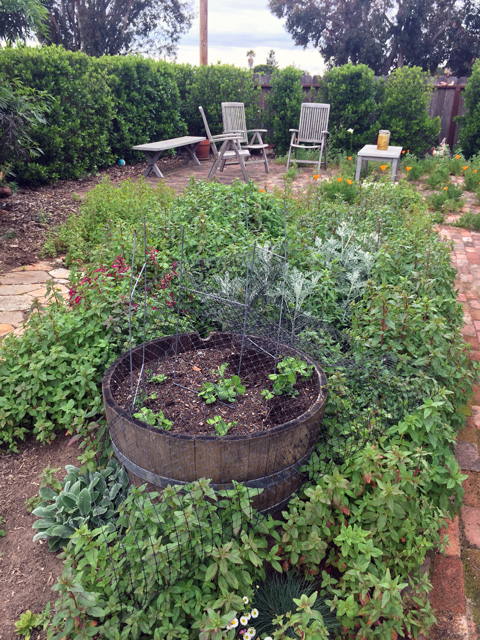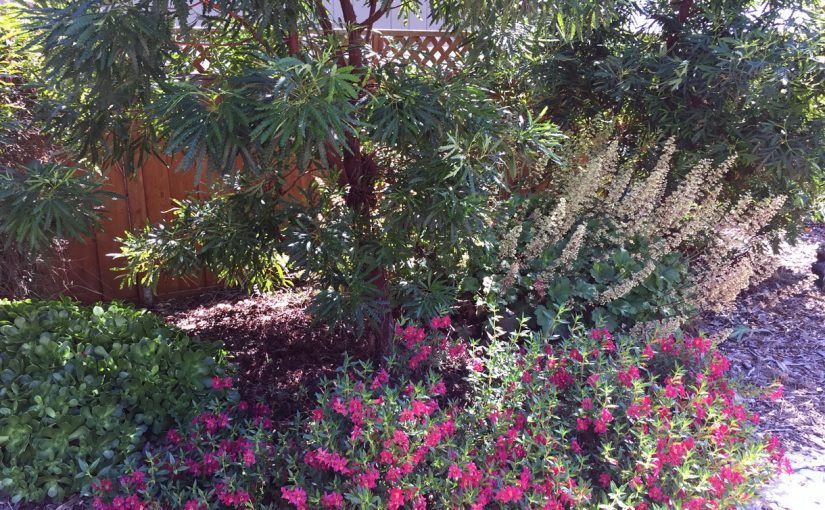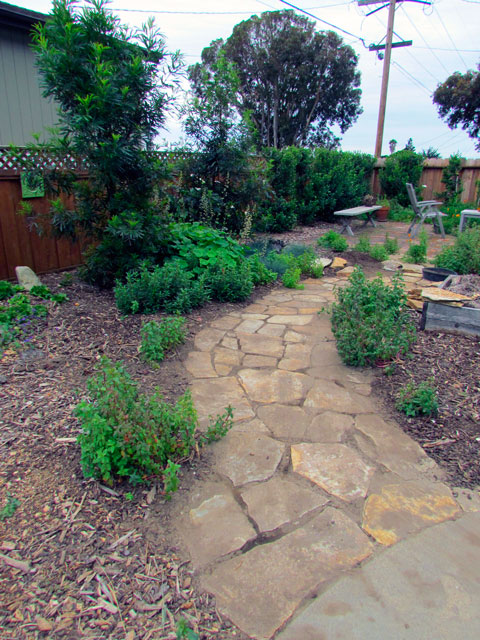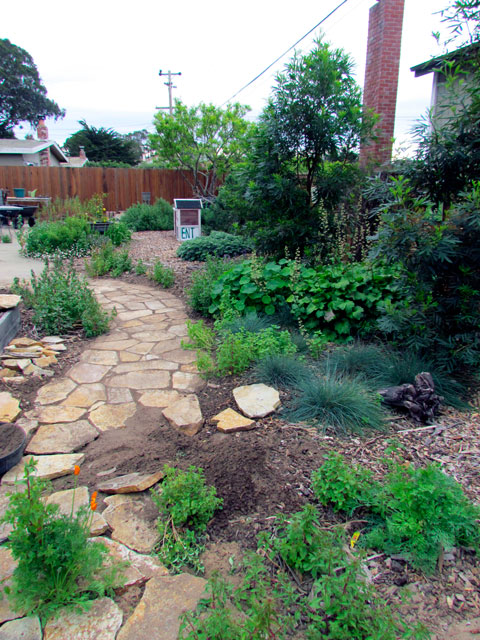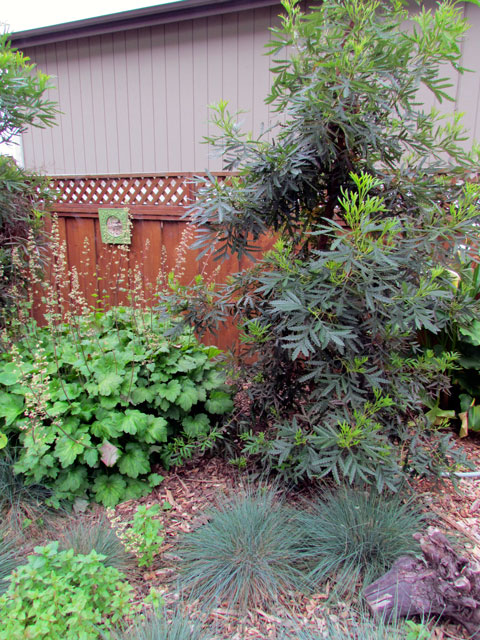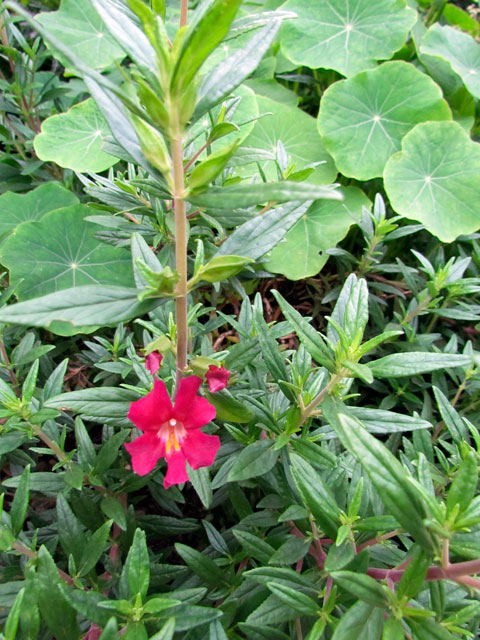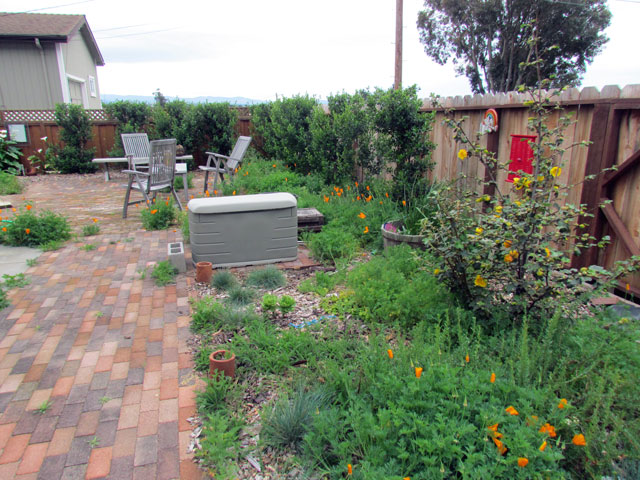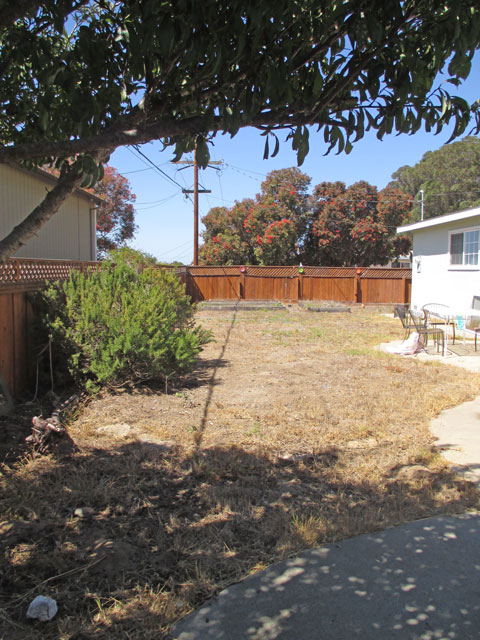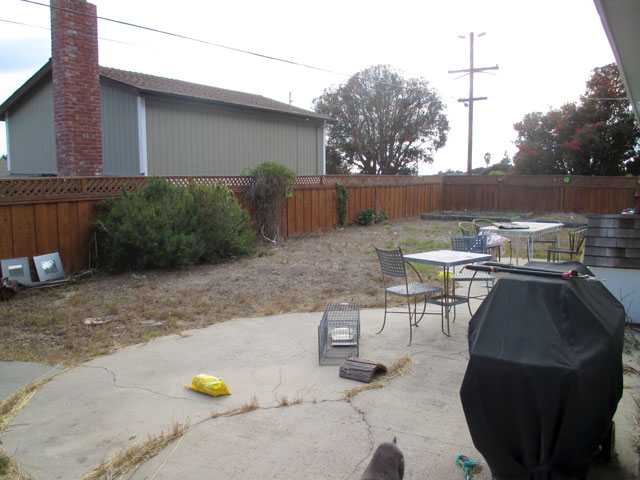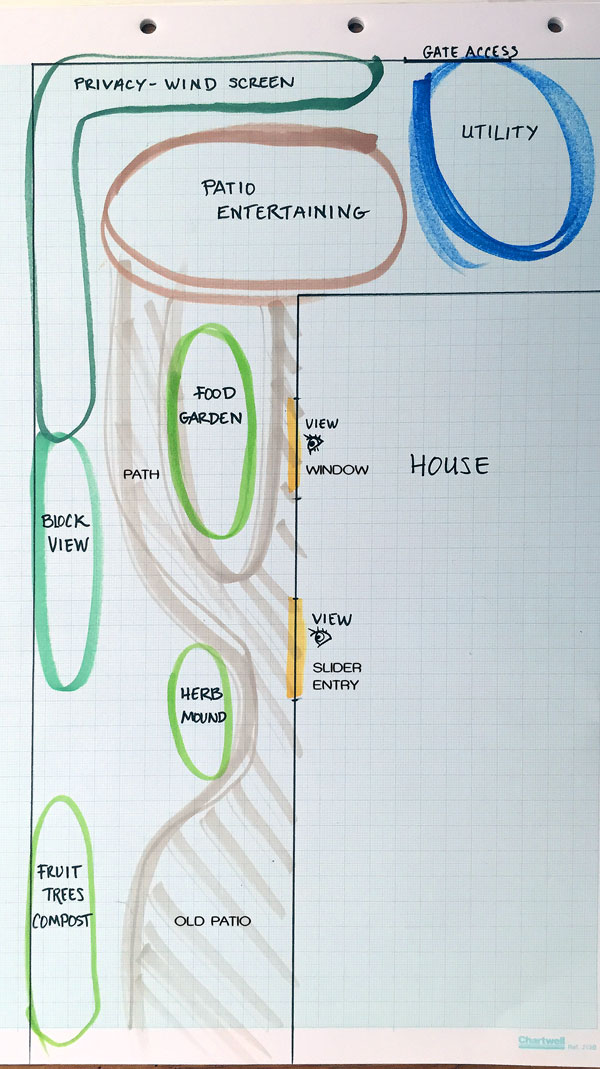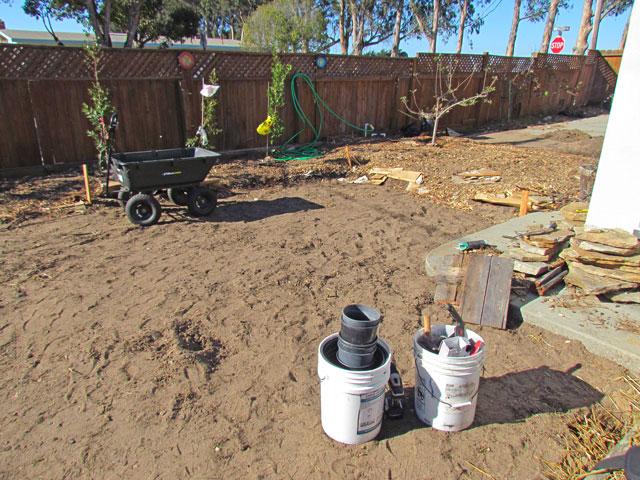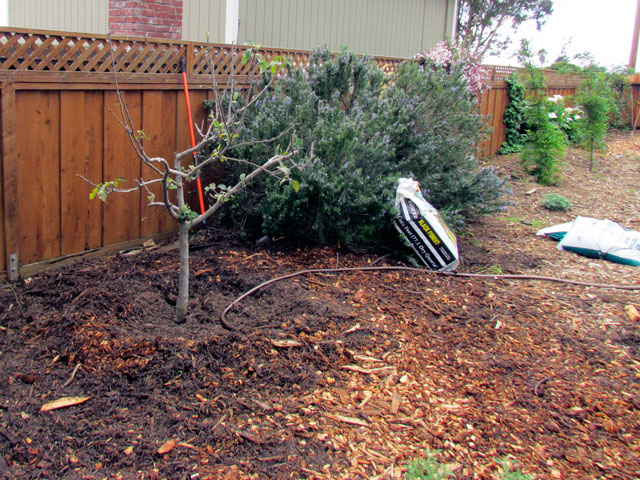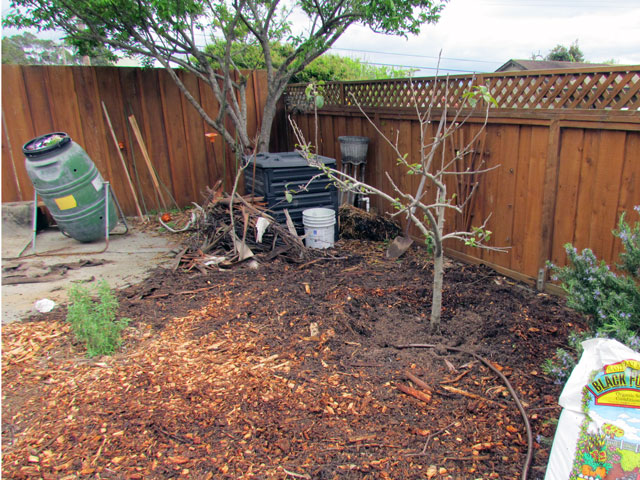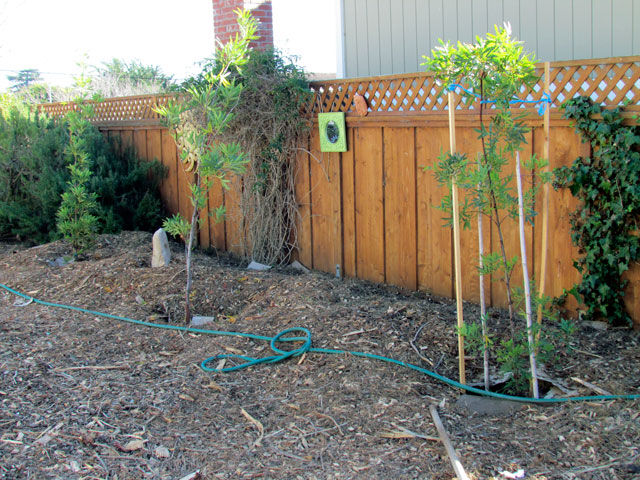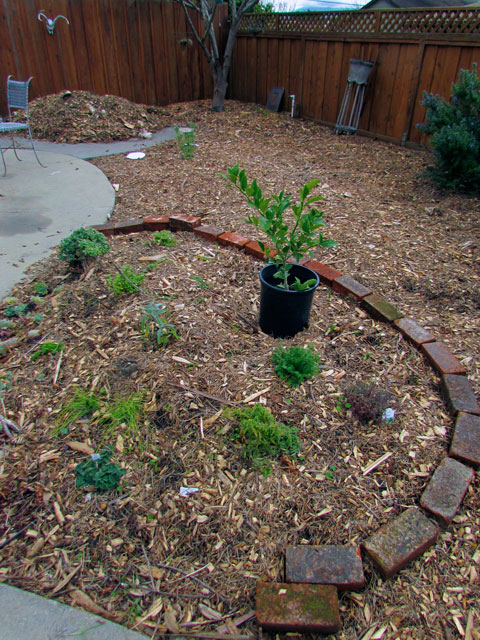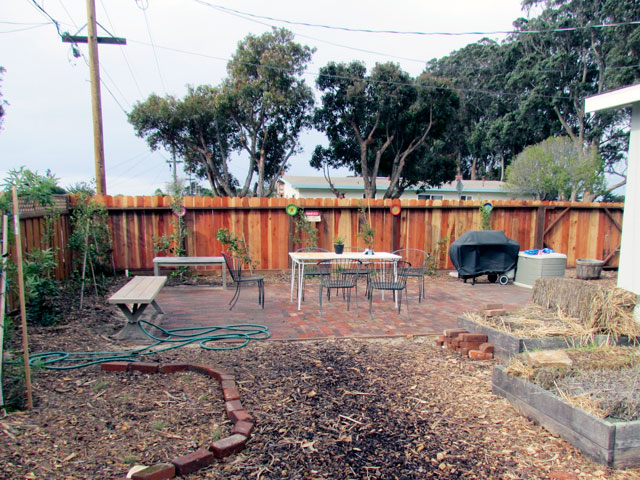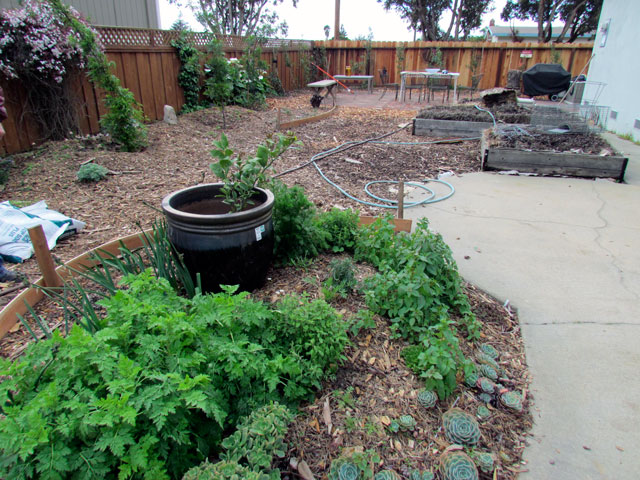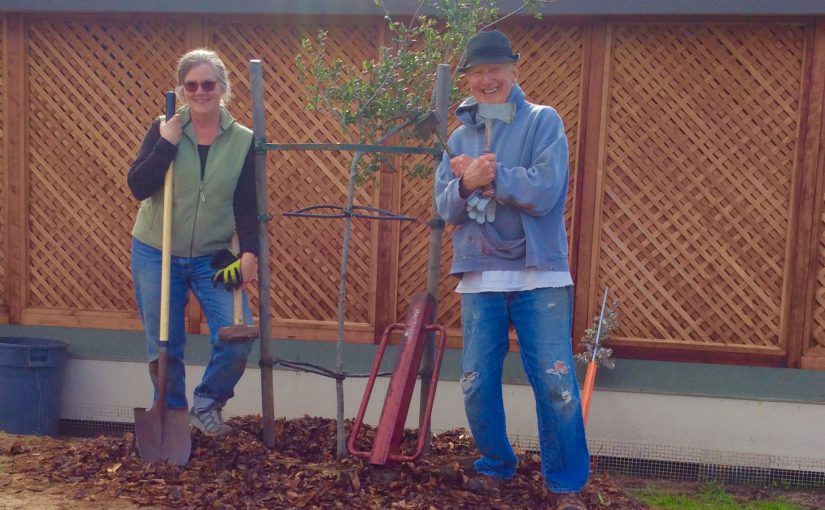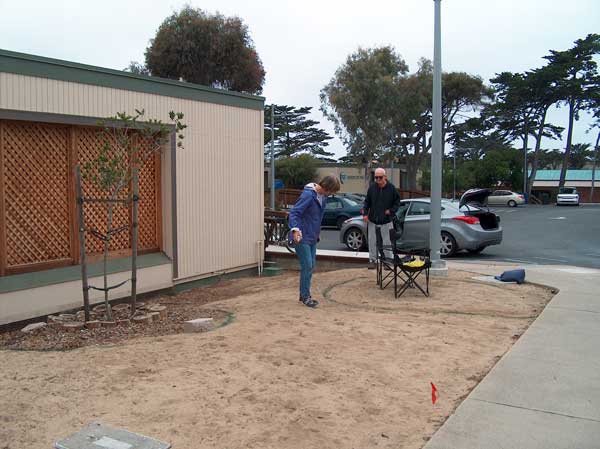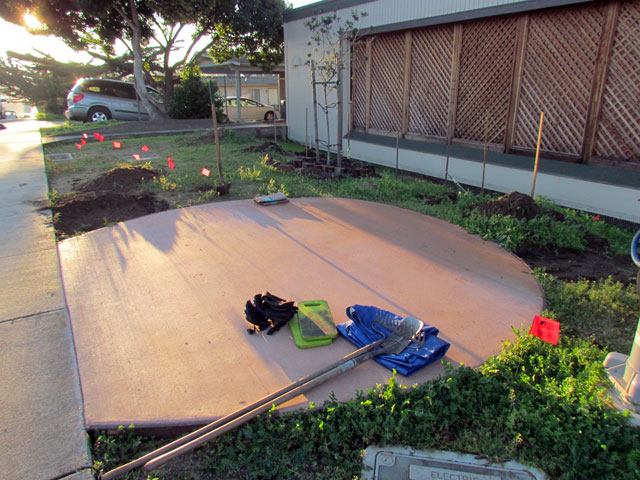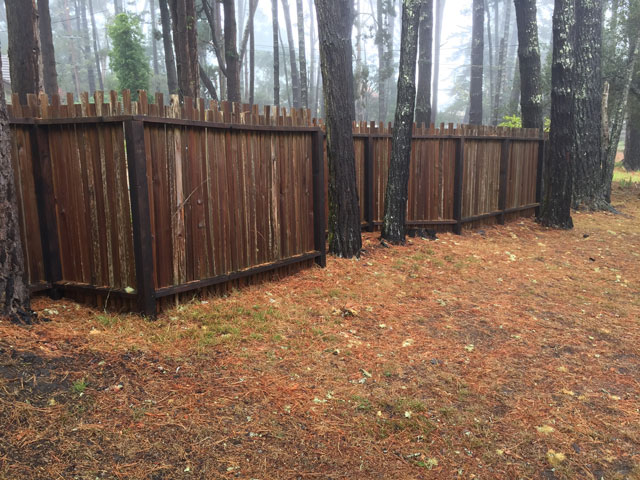
This garden held many challenges with shade and roots of mature Monterey Pines, and the browsing of free-ranging deer. Past plantings had not been entirely site appropriate nor deer resistant.
How to build a garden with shade and deer
Our gardener initially wanted to refresh plantings for color that would resist deer and grow well under the pines around the front of the house. Further discussion defined a need for privacy, light blocking from a neighboring property, an enclosed area to stop deer traffic and provide a dog run close to the house.
The neighbors outdoor lighting leaked through the grape stake fence on one side of the property and there was a desire to plant some sort of hedge to block out the unwanted glare. This was another challenge as the large Monterey Pines would not allow planting in the root zone where hedging would work best to solve the bright lights from next door.
The solution for this part of the garden was to build a mound that would allow for direct planting without disturbing the roots of the pines. The plants chosen were the most deer resistant that research could determine! There are NO ABSOLUTELY DEER PROOF PLANTS! Most (but not all) were native varieties that would thrive under the pines and dappled light.
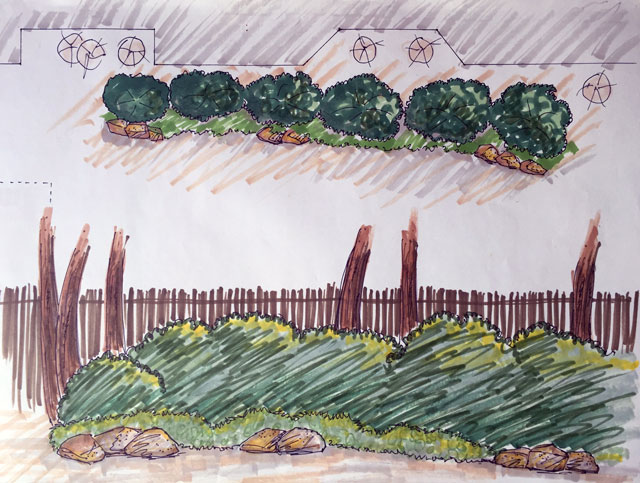
So began Phase 1
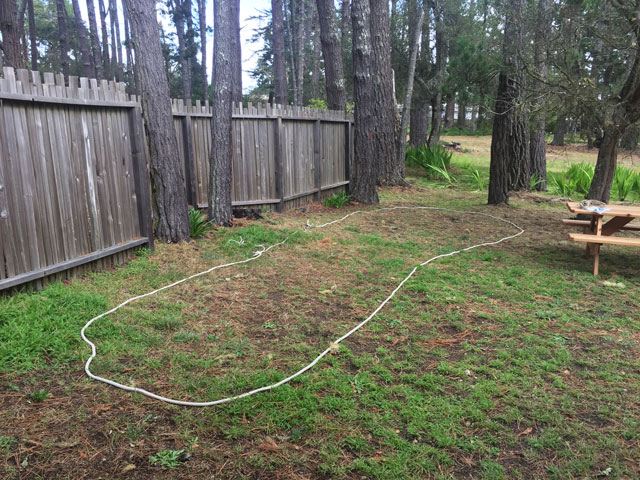
We marked out the area where a mound would be built during the day using a long piece of rope. In the evening, the client placed flags on the mound where a shrub would best block the lights. This information helped refine the final shape and position of the mound before the soil was ordered. A second benefit of using a rope is using the length to calculate the final area to order soil. We got a topsoil mix with extra compost added to make the mound.
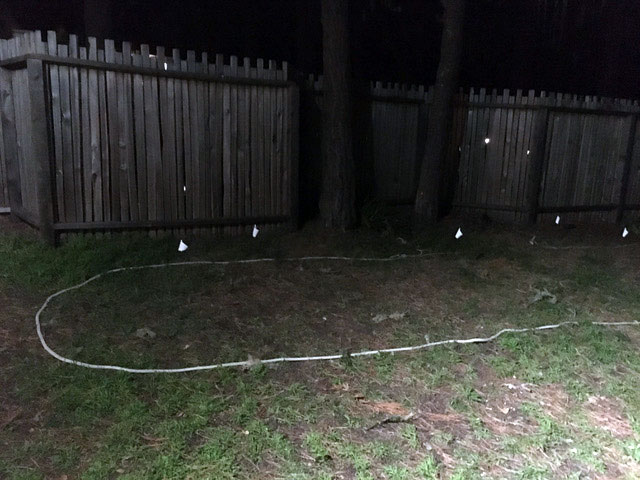
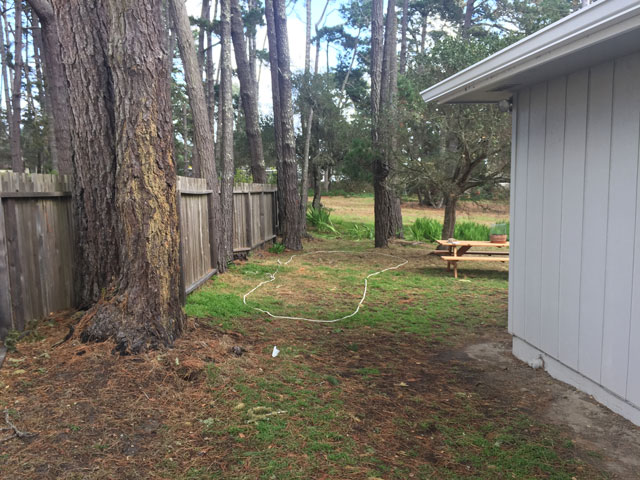
Mounds are a great way to provide drainage for heavy soils and many native plants are not keen on soggy feet such as ceanothus. No holes were dug into the root zone of the pine trees and the mound was kept well away from the trunk of the trees. Cardboard was laid down in preparation of the soil and would keep hungry tree roots at bay for the first year while shrubs became established.
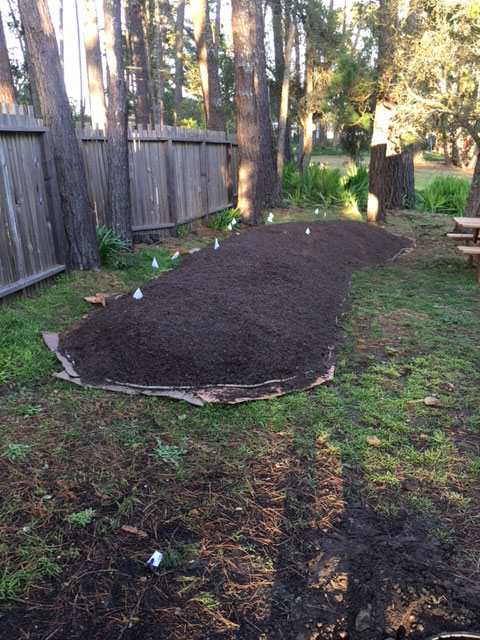
Another bonus of the mound is that it raises the plants up by 12″-18″ and increases the height of the growing shrubs from the very beginning. The raised contour will help direct rain towards the end of the property and adds visual interest to an otherwise very flat area.
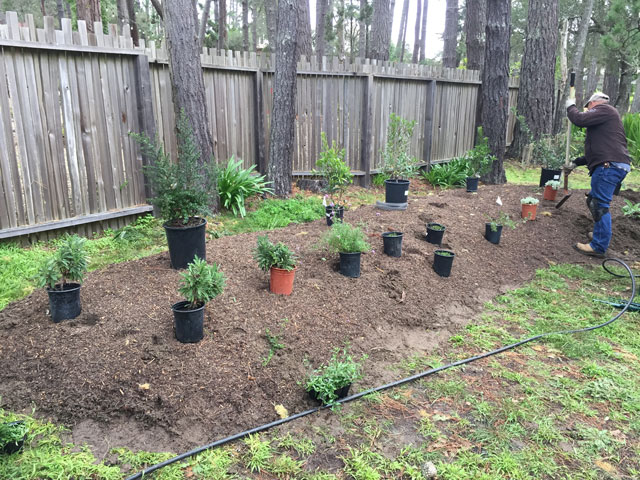
All of the plants were covered with mesh or cages to prevent snacking by deer before the roots got established. All of the plants were planted with gopher baskets as there were gopher mounds noted in the back area. This was just simple insurance that everything would get the best start possible for the first year.
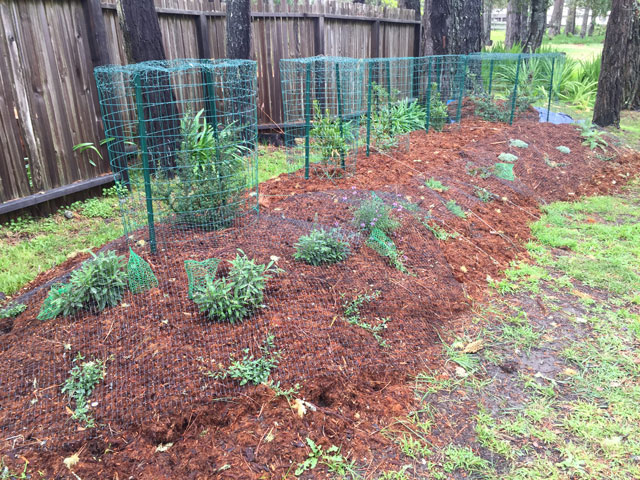
It was a gift that the regular garden service (that the client employs for general maintenance) was willing to work with the new plan to build a mound and install drip for the new plants. They put down the spaghetti tubing with emitters after all was planted. The gorilla hair mulch capper hid all of the hardware underneath.
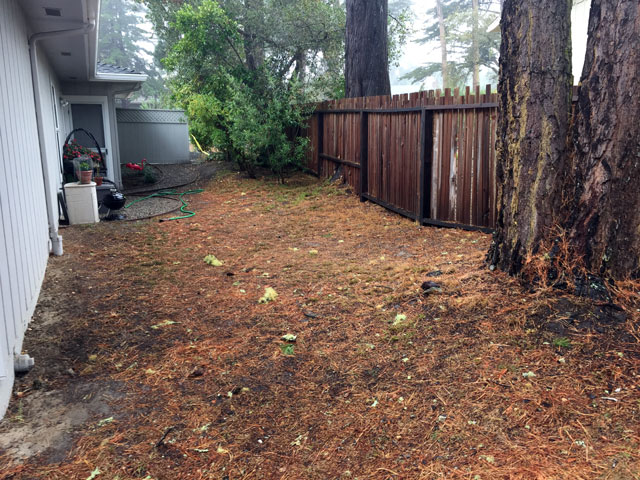
I did get feedback from the crew that they don’t like the gorilla hair for maintenance because it holds on to the pine needle drop and make the use of a blower problematic. I have a preference for using—especially around ferns—as it really holds moisture, weeds can’t get into as easily and it sticks to the mound. We will see what the long term results are about using this over wood chips on the mound.
Is anything Deer Proof?
We selected Pacific Wax Myrtle (Myrica californica) for the main light blocking section of the mound with a ‘Julia Phelps’ ceanothus on one end for color, and, a California Silk Tassel (Garrya eliptica ‘James Roof’) for show on the other end. A low growing manzanita (Arctostaphyllos ‘John Dourley’) was chosen for the central section to blot out light below the Pacific Wax Myrtles. Artemesia ‘David’s Choice’, Salvia ‘Dara’s Choice’, Salvia spathecea, and Santa Barbara Daisy (Erigeron karvinskianus) were chosen as they are generally unpalatable to deer. Verbena Lilacina ‘Paseo Rancho’, is a California native that is becoming very popular in the trade and has a long bloom period. There is some evidence that deer are less likely to eat, as well as the smaller leaved ceanothus varieties (‘Julia Phelps’ in this case).
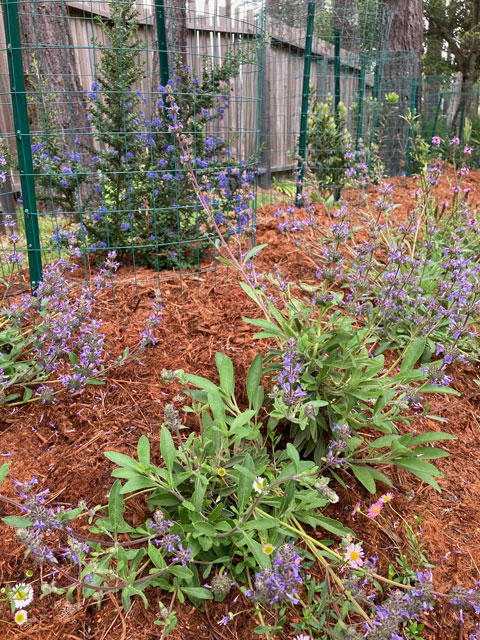
There were a few snips missing from the Lilacina last time I visited so there was a tasting after we took the netting off in May. Time will tell about desirability, as hungry deer will try anything once, and, well watered plants are especially attractive to deer during a drought.
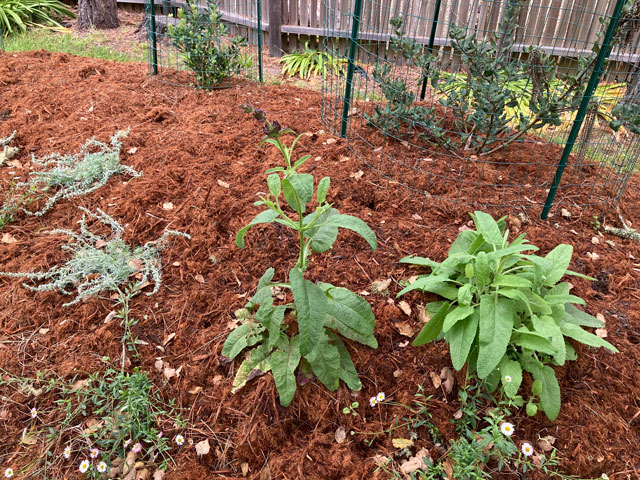
Just to recap, the mound building and early planting happened in January and February catching the end of the very poor rains this year. Most California natives should be installed by November and into winter to gain root growth before the dry season hits. This was a classic year in which having a drip really helped get everything off to a good start. Hand watering would have been more work with perhaps not as good results (depending on dedication to watering).
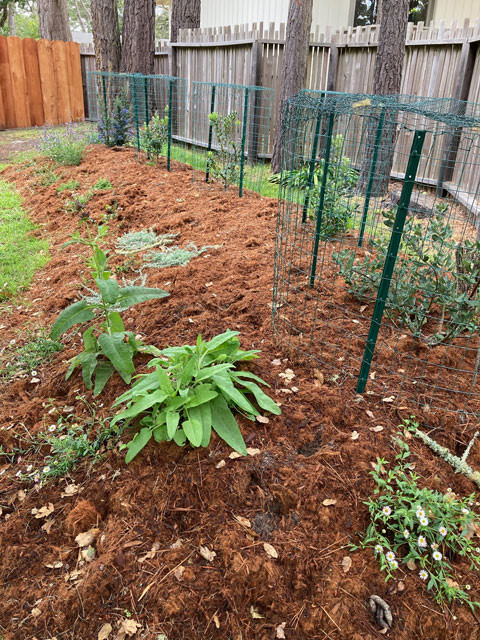
So did the mound solve the lighting problem? Yes and no. Although the height of the mound and the rapid growth have done some good in minimizing the light it will be another year before the Pacific Wax Myrtles get wide and thick enough to really block the light. They can potentially grow 3 feet a year in good culture conditions (which looks like they will). We talked about hanging cloth to block light on the backs of the cages in the interim but patience may be the key here.
